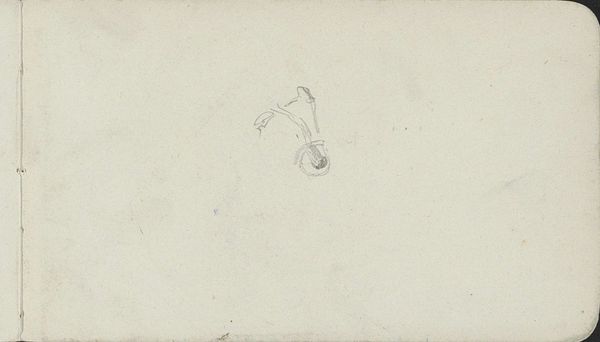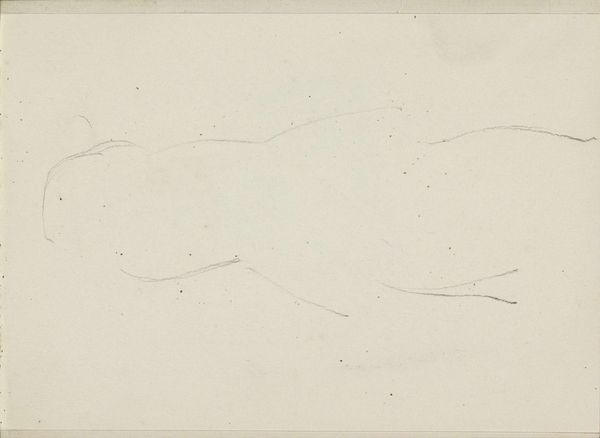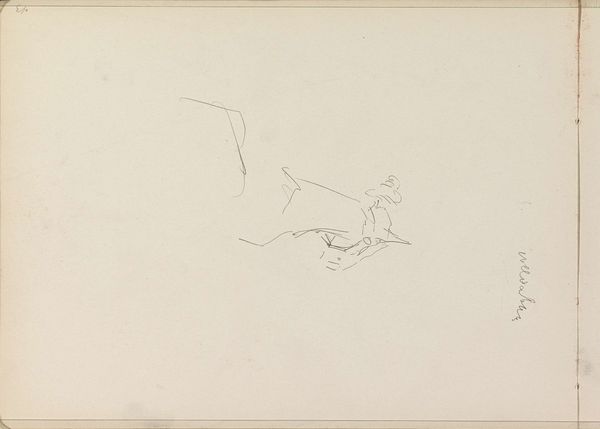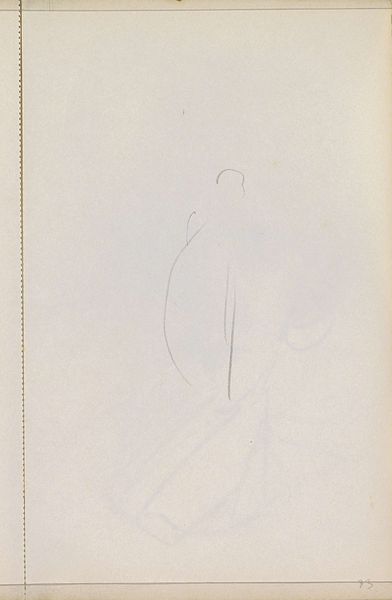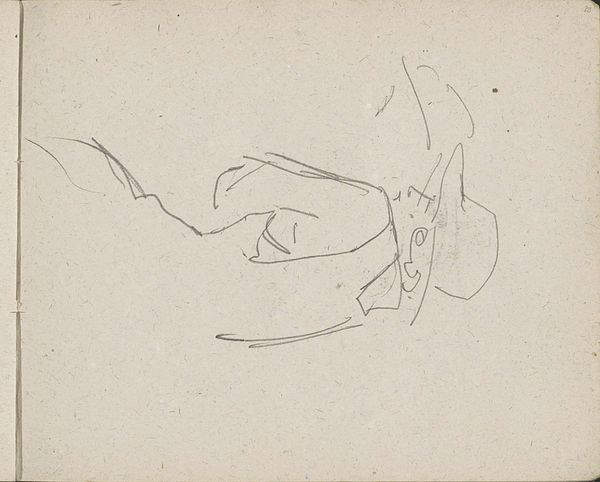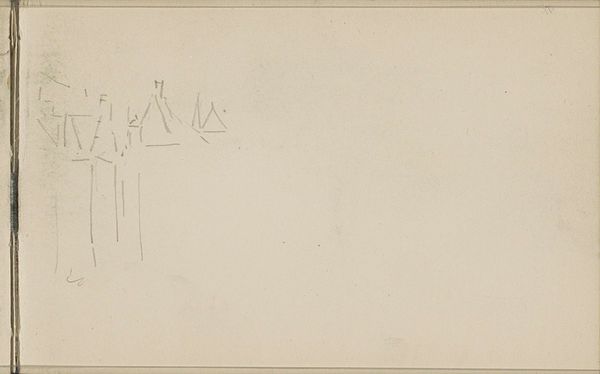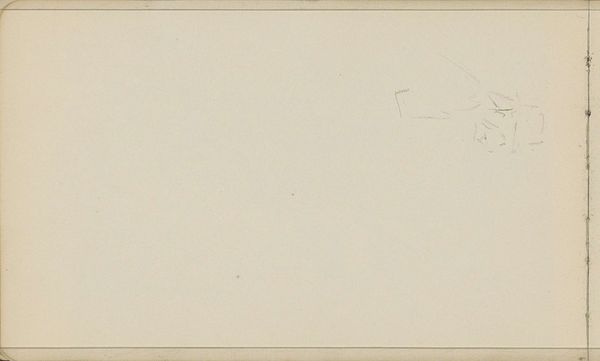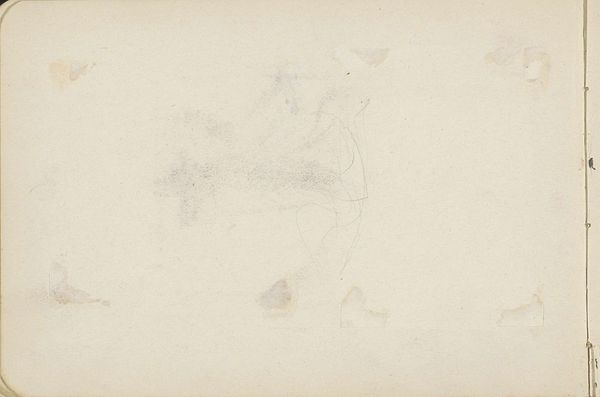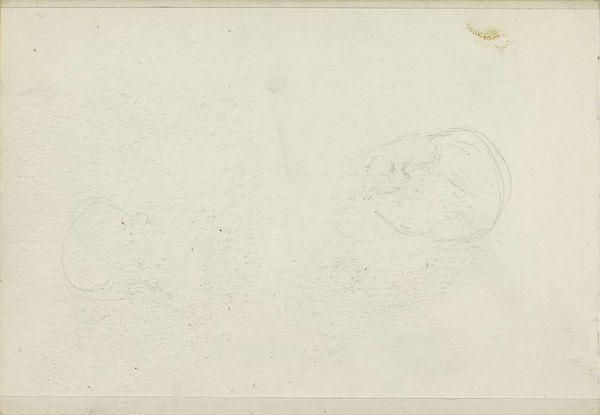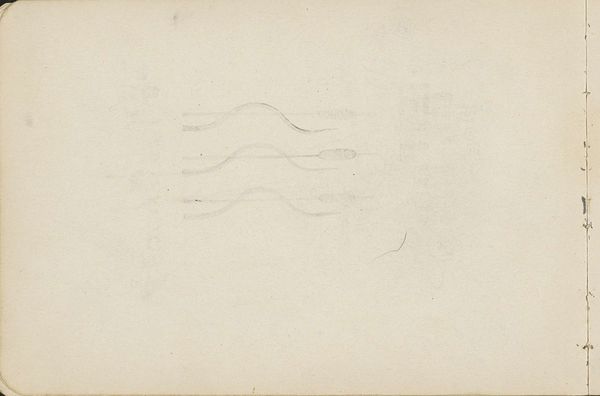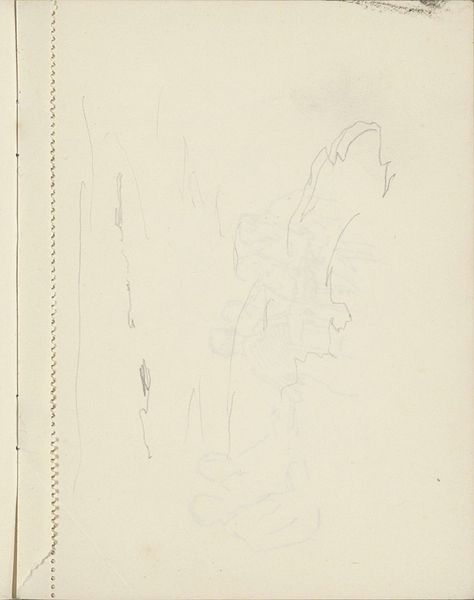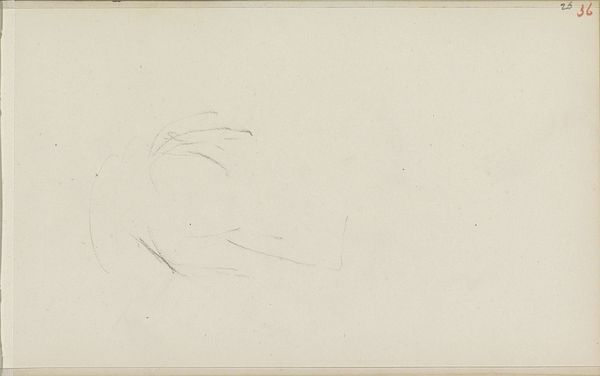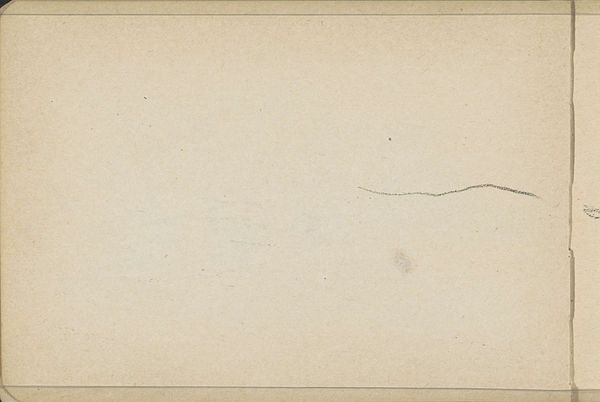
drawing, paper, pencil
#
drawing
#
light pencil work
#
paper
#
form
#
personal sketchbook
#
pencil
#
abstraction
#
line
#
sketchbook drawing
#
sketchbook art
Copyright: Rijks Museum: Open Domain
Editor: This is "Studie" by Carel Adolph Lion Cachet, a pencil drawing on paper, created around 1905-1906. It's really sparse, almost like a ghost of an idea. What do you make of it? Curator: It’s interesting you call it a ghost. This kind of rapid sketch reveals so much about the artist's process, doesn’t it? During the early 20th century, there was growing interest in representing not just the surface of things, but the very act of seeing, of thinking. Where does this particular sketch sit, not just aesthetically, but within a social and cultural framework? Editor: It’s definitely more abstract than anything I’ve seen by Cachet before, a big change from their other animal studies and woodblock prints. Does that push back against the artistic expectations of the time? Curator: It challenges expectations, certainly. Abstraction at this time wasn’t just a visual choice; it was often a statement. What might Cachet be saying about the function and accessibility of art by leaving this sketch so bare? Think of the burgeoning art market at the time, the rise of public museums. Who was art *for*, and what should it show? Was Cachet responding to those market forces by leaving something deliberately "unfinished"? Editor: I never considered that, framing a sketch in a sociopolitical context! It seems I had just thought it might have just been simple doodling! Curator: Exactly! Sketches can also become artifacts, speaking volumes about shifting values within both artistic circles and society at large. It reminds us that no image exists in a vacuum. Editor: That's a fascinating way to see it. I'll definitely look at these kinds of sketches differently from now on.
Comments
No comments
Be the first to comment and join the conversation on the ultimate creative platform.
